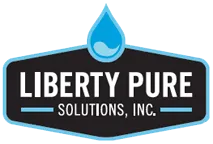Access to clean and safe water is fundamental to our health and well-being, yet many households and businesses face challenges with water quality that can affect everything from taste and odor to potential health risks.
Fortunately, modern water treatment systems offer effective solutions tailored to address specific issues such as hardness, acidity, iron content, and various contaminants. From water softeners that enhance appliance longevity to reverse osmosis systems that ensure pristine drinking water, the range of available technologies caters to diverse needs. In this article, we explore the advantages of different water treatment systems—from removing stains and unpleasant odors to safeguarding against harmful substances—and how they contribute to improving overall water quality and peace of mind.
Below are highlights of how each system or service addresses specific water quality issues and improves overall water safety and usability.
Water Softeners
- Reduces Hardness: Eliminates minerals like calcium and magnesium that cause scale buildup on pipes and appliances.
- Improves Efficiency: Helps appliances like water heaters and dishwashers operate more efficiently and last longer.
- Softer Skin and Hair: Makes bathing more enjoyable by leaving skin and hair feeling softer.
Acid Neutralizers (for blue/green stains)
- Prevents Corrosion: Neutralizes acidic water to prevent damage to plumbing and fixtures.
- Eliminates Staining: Stops the formation of blue or green stains caused by acidic water on sinks, tubs, and toilets.
Iron Filters (for brown stains/rotten egg smell)
- Removes Iron: Eliminates iron particles that cause rust stains on fixtures and laundry.
- Odor Reduction: Addresses the unpleasant smell often associated with high iron content water.
Nitrates/Nitrites Removal Systems
- Health Protection: Removes harmful nitrates and nitrites, which can be hazardous to health, especially for infants.
- Improves Taste: Enhances the taste and odor of drinking water by eliminating these contaminants.
Lead Removal Systems
- Health Safety: Removes lead, which is toxic and harmful to health even at low levels.
- Compliance: Ensures drinking water meets regulatory standards for lead content.
MTBE Removal Systems
- Environmental Protection: Eliminates MTBE (methyl tert-butyl ether) and other volatile organic compounds (VOCs) that can contaminate groundwater.
Pesticides/Herbicides Removal Systems
- Health Protection: Removes agricultural chemicals like pesticides and herbicides, safeguarding drinking water from harmful contaminants.
Reverse Osmosis Systems
- Thorough Filtration: Removes dissolved solids, contaminants, and microorganisms from water.
- Improved Taste: Enhances the taste, clarity, and odor of water, making it more palatable for drinking and cooking.
Salt Water Removal Systems
- Desalination: Converts saltwater into freshwater suitable for drinking and irrigation in coastal areas.
- Water Security: Provides a reliable water source in regions with limited freshwater availability.
Membrane Technology
- Efficiency: Uses advanced filtration membranes to effectively remove contaminants while maintaining water flow.
- Versatility: Applicable to various water treatment needs, from residential to industrial applications.
